Articles & Videos
Have you discovered these features of the new Sound Waves Decodable Readers?
Categories
Subscribe to our newsletters
Receive teaching resources and tips, exclusive special offers, useful product information and more!
Have you discovered these features of the new Sound Waves Decodable Readers?
Sound Waves Literacy 23/5/23
You name it, we’ve got it! Here are just some of the features of our new Decodable Readers that make them a cut above the rest!
Levels
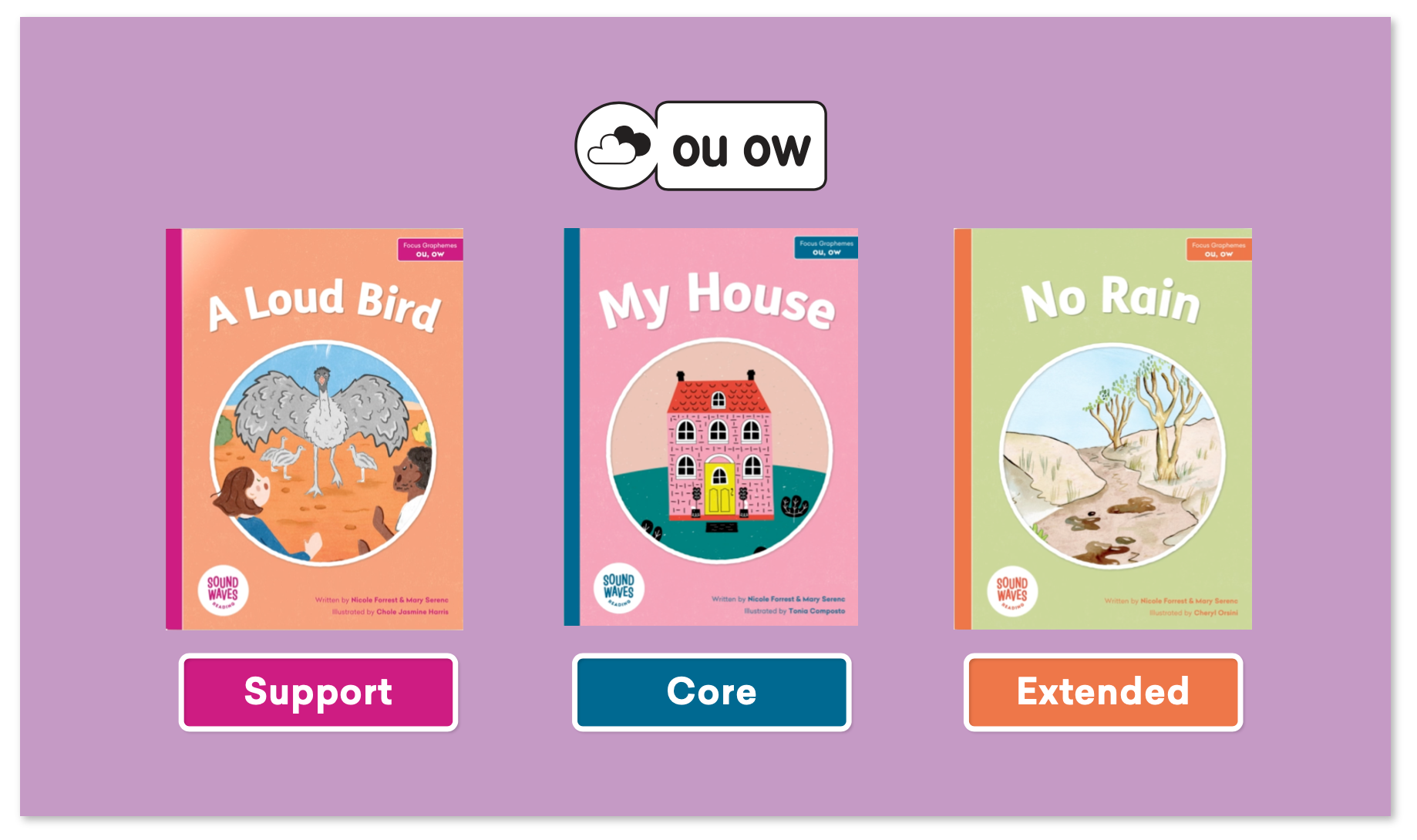
Unlike other readers on the market, Sound Waves Decodable Readers are available in three levels of difficulty so you can provide a positive and successful reading experience for your whole class. For every focus sound covered in the sequence, there is a Support, Core or Extended title to choose from.
A book for each phoneme
Every phoneme–grapheme relationship in the Sound Waves Literacy sequence gets its own story*! Every Decodable Reader has been expertly written to frequently include the focus phoneme–grapheme relationship, while still maintaining a clever and captivating storyline. With the Core and Extended books, students can practise reading all the graphemes they have learned for a particular phoneme in one story. With the Support set, multiple books have been written for some phonemes to give students a chance to practise different graphemes in isolation.
*There is a Sound Waves Decodable Reader for each focus phoneme except for ![]()
Warm Up
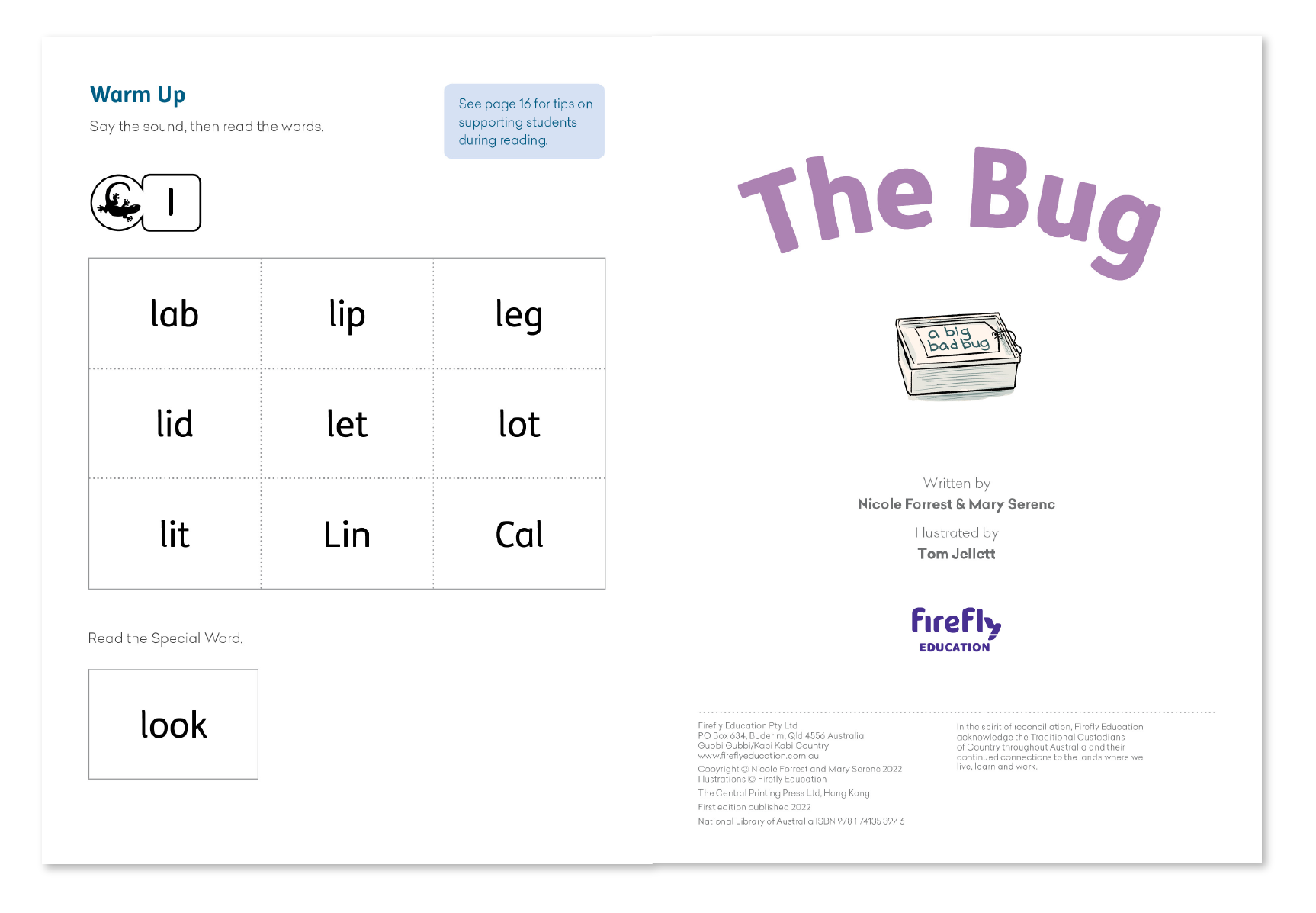
On the inside front cover of each Decodable Reader, you’ll find a Warm Up page that provides an opportunity to revise and practise the focus phoneme–grapheme relationship/s. Here, students get the chance to practise reading single words before they jump into the full, connected text. In the Core and Extended books, this page also includes any Special Words, which are high-frequency words that contain unusual or advanced phoneme–grapheme relationships.
Text
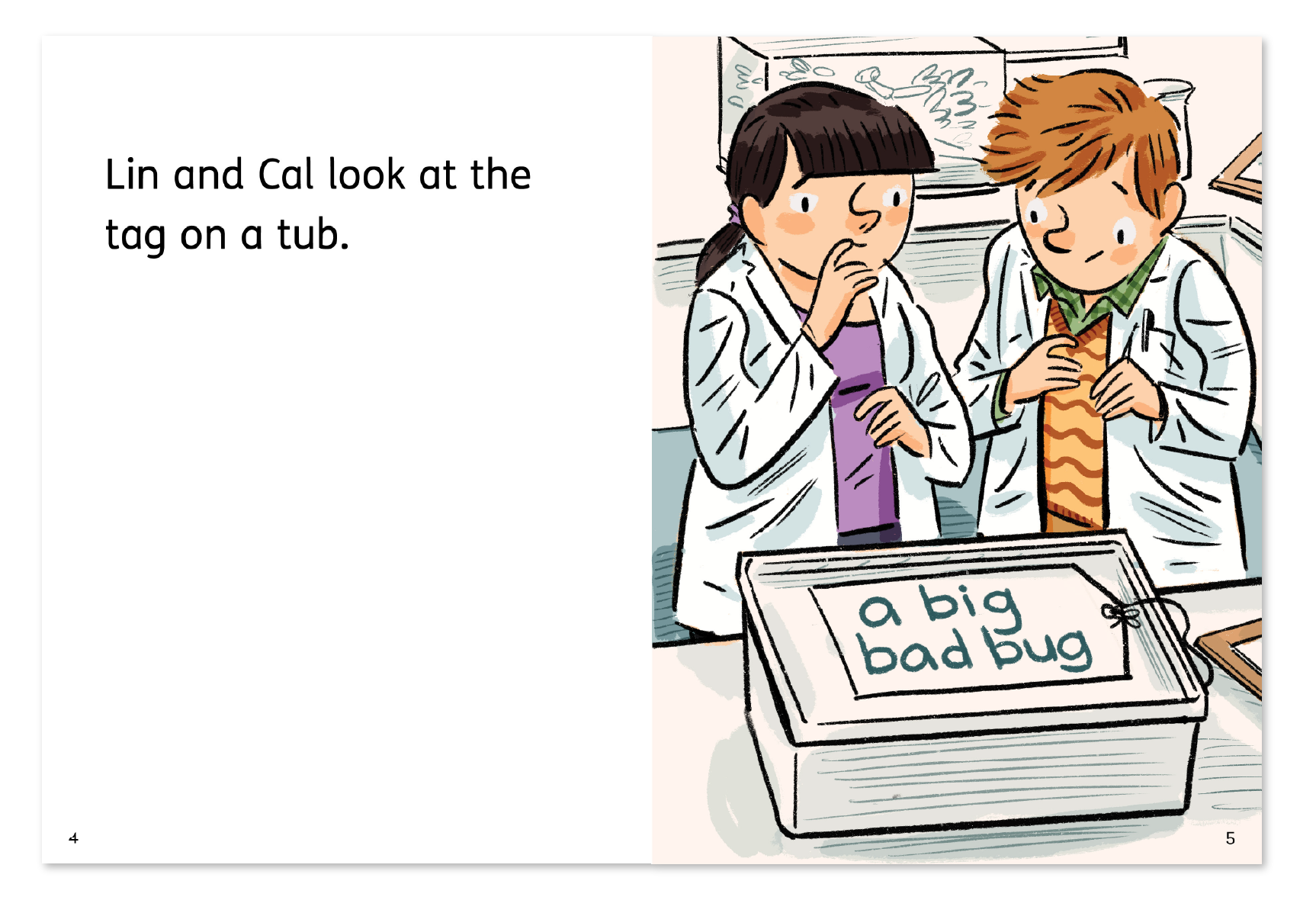
The text in the Decodable Readers was crafted by our literacy experts to ensure a high presence of the focus phoneme–grapheme relationship/s and Special Word/s.
Each text is grammatically correct and beautifully constructed, with clear, uncluttered pages that encourage students to engage with the meaningful content and use their imagination. After all, we want young students to enjoy the texts and to want to read them again.
Font
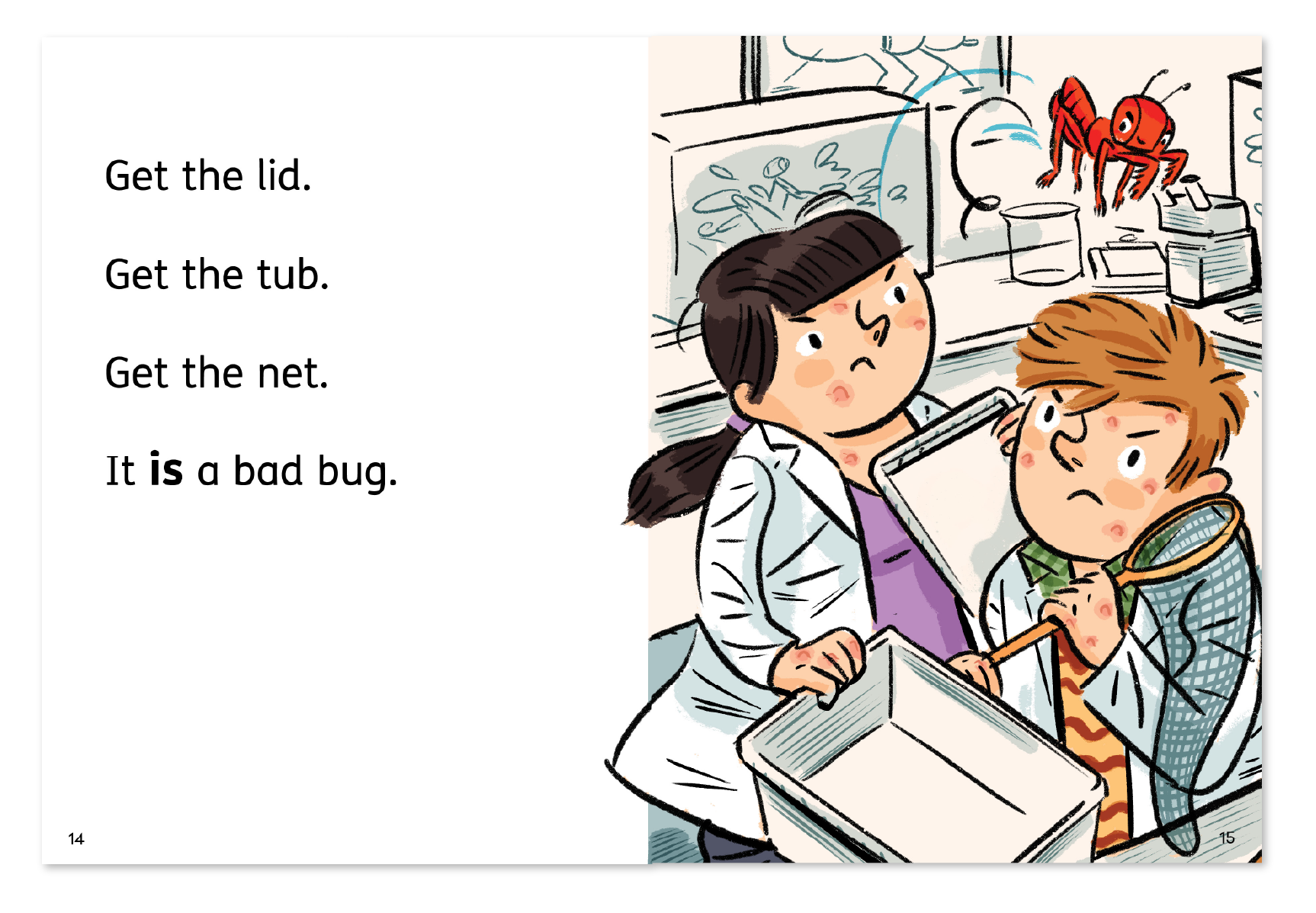
Our authors vetted nearly 1400 different fonts before they found the right one for the job! In the end, they went with FS Me, a font with clear, distinct letter shapes. Read more about how we found the perfect font for our Sound Waves Decodable Readers.
Page layouts
Much thought went into producing texts that are formatted for students to read easily. Most texts are left- and top-aligned on the page, with a clear space between words and a large space between sentences to make the text as comprehensible as possible.
The authors have ensured that text-heavy spreads are followed by pages with less content to help reduce the cognitive load for students.
Illustrations
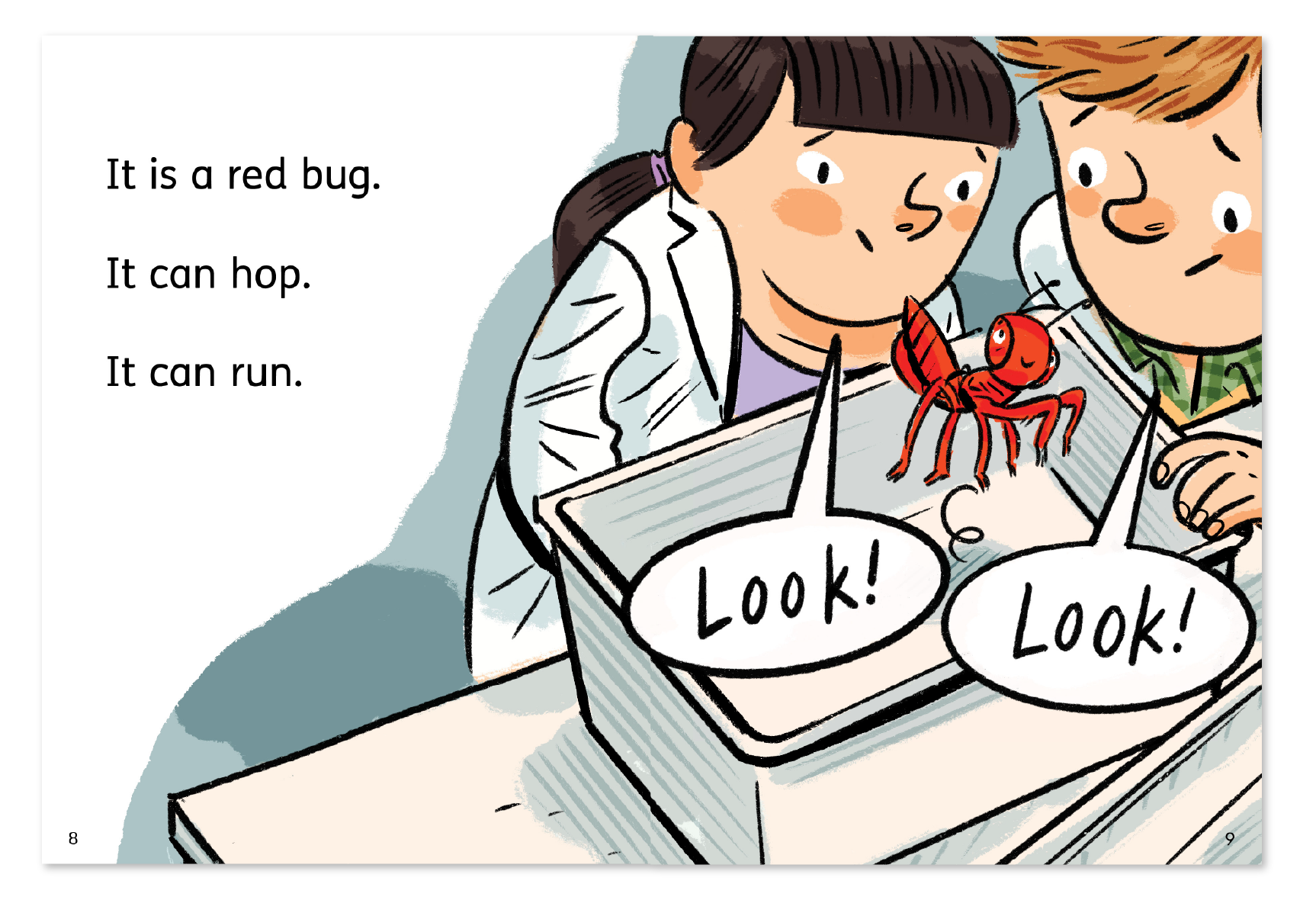
Although the words are the main ingredient, the illustrations and page layouts have also been curated to truly shine. We’ve partnered with a range of celebrated illustrators, including Tom Jellett, Cheryl Orsini and Claudia Frittitta, to create beautiful and engaging books. Every illustration has been cleverly crafted to enhance the story and prompt discussion, without enabling students to predict the text.
Book Chat
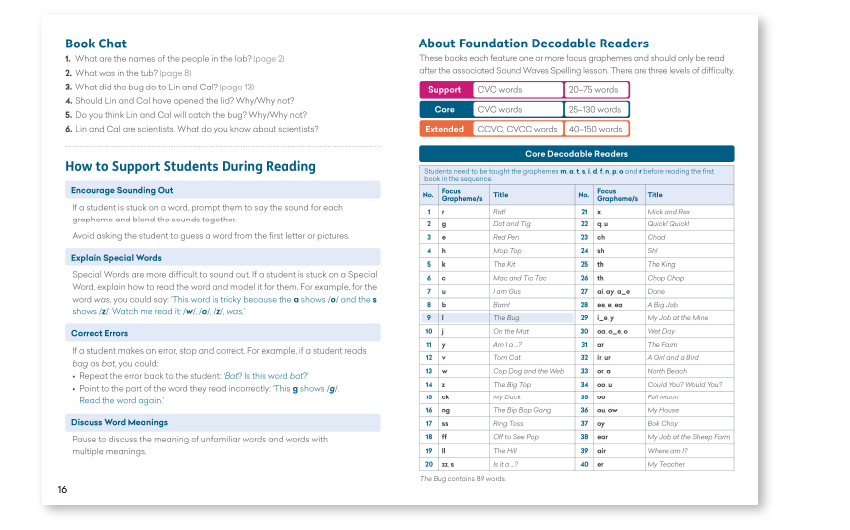
On the inside back cover of the Decodable Readers, you’ll find the Book Chat. This section allows you to unpack the text with your students, delving into literal, inferential and those all-important connecting questions for a very worthwhile post-reading discussion. There are even page numbers included next to the questions for easy reference!
Tips on supporting students during reading
Home reading can be overwhelming for parents who may have learned to read in different ways to their children and are unfamiliar with Sound Waves Literacy or systematic synthetic phonics generally.
With this in mind, we’ve included some tips for parents to support children during home reading. These include suggestions such as encouraging their children to sound out words they are stuck on and correcting errors as they arise.
If you want to learn more about these incredible little books, head to our website to view sample pages, see how the program is structured or speak with an education consultant.